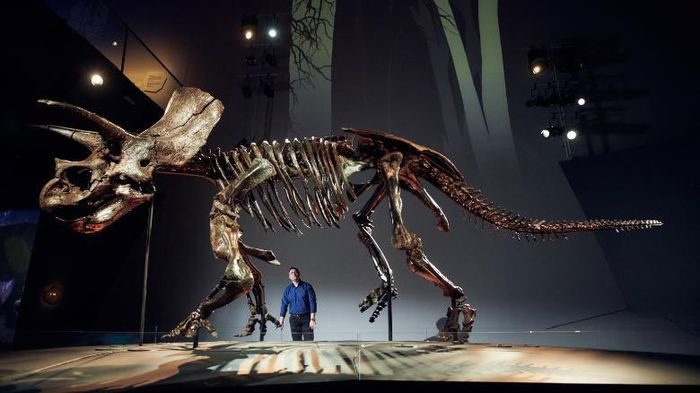The global mass extinction event of animals is currently unfolding and is considered worse than previously predicted. This is the assessment made by a group of scientists published in the journal The Scientist. According to their findings, up to 48% of animal populations are shrinking, with only 3% increasing, while 33% of species are gradually heading towards extinction.

The fossil of the three-horned dinosaur Horridus, which went extinct 67 million years ago. (Source: Museums Victoria).
The study, conducted over several years, examined more than 71,000 species of animals (including mammals, birds, reptiles, amphibians, fish, and insects) from around the world. Scientists agree that a mass extinction event is currently taking place and that species are disappearing at a much faster rate than they can be replaced.
The assessment of a species’ conservation status is based on evaluations issued by the International Union for Conservation of Nature (IUCN), which also indicates that the current extinction rate is now 1,000 to 10,000 times (depending on the species) higher than before. This has led some scientists to argue that life on Earth has entered the “sixth mass extinction event.” Previously, our planet has experienced five major extinction events:
- The first was the Ordovician-Silurian event (444 million years ago), which wiped out 85% of life on Earth.
- The second was the Late Devonian extinction (383-359 million years ago), which caused 75% of species on Earth to vanish over a span of 20 million years.
- The third was the Permian-Triassic extinction (252 million years ago), during which 97% of species (those that left fossils) disappeared permanently.
- The fourth was the Jurassic-Triassic extinction (201 million years ago), leading to the extinction of 80% of all marine and terrestrial species.
- The fifth was the Cretaceous-Paleogene extinction (67 million years ago), marking the end of the age of dinosaurs.
Notably, all five of these mass extinction events were caused by natural factors; while the sixth extinction (if it occurs) is believed to be driven by human impact.
The hypothesis of a sixth mass extinction has faced considerable opposition. Nevertheless, it serves as a red flag for humanity regarding the need to respect and protect nature. Environmental experts argue that many species are declining due to habitat loss, the detrimental effects of pesticides, herbicides, and other chemicals, which are further exacerbated by climate change.
Biodiversity is no longer just a call to action; rather, it should be viewed as a warning to humanity about the potential destruction and collapse of ecosystems. However, unlike the asteroid impact that led to the extinction of the dinosaurs, we still have time to make changes, provided we have the utmost determination.




















































